How to be sure your band heaters last a long time?

Over the years, we often noticed easily preventable breakages on band heaters.
Here’s the answer to above question: Diagnosis of the problem and corrective measures. Here are some tips to help you!
Most probable breakage causes:
1. Air pocket
An air pocket is undoubtedly one of the most common causes and occurs early on.
Band heaters heat by conduction, in other words direct contact from metal to metal.
To ensure better heat transfer, the band must be retightened after 1 hour of use. If you can slip a thin sheet of paper in between the cylinder to heat and the band, it can means :
- It is not tight enough (For larger diameters - more than 12’’ - it is worth tapping with a rubber mallet, always start from the center of the band towards the ends to make it fit better on the cylinder. It will facilitate adequate tightening.
- Your cylinder is not clean and smooth causing the band to heat the contaminant instead of the cylinder through direct contact;
- Your cylinder is damaged and not perfectly round;
- Or the band has not been shaped correctly by the manufacturer (i.e. the band is oval-shaped close to the gap).
If you notice one of these situations, an air pocket may occur under the band, causing an early breakage.
2 sections band with air pocket. You can see by the dark color of the heater that it has clearly overheated.
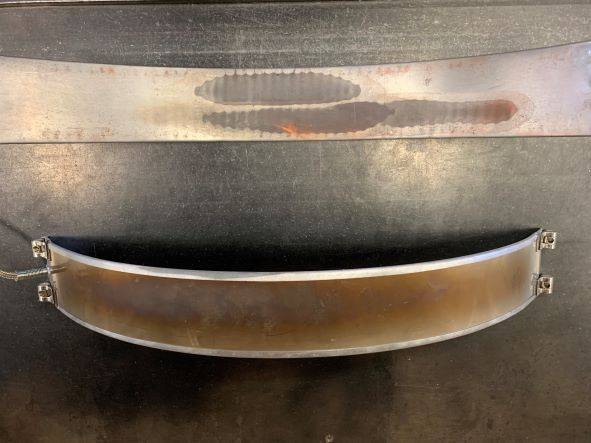
Heater band that was not shaped well for the die diameter.
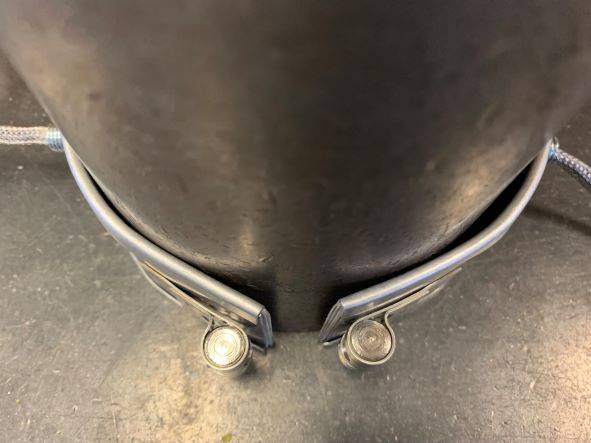
2. Wrong diameter
Another cause of early breakage of the band can be a wrong diameter. I.E. You measure a cylinder diameter of 12” while the barrel is really 11”. One more inch in diameter gives a circumference of 3” more for the band; which will result in maximum tightening of the band without gap, therefore the ends of the gap will not adhere well to the matter to be heated. Risk of air pocket. Always make sure you have the exact diameter “imperial or metric” depending on your equipment.
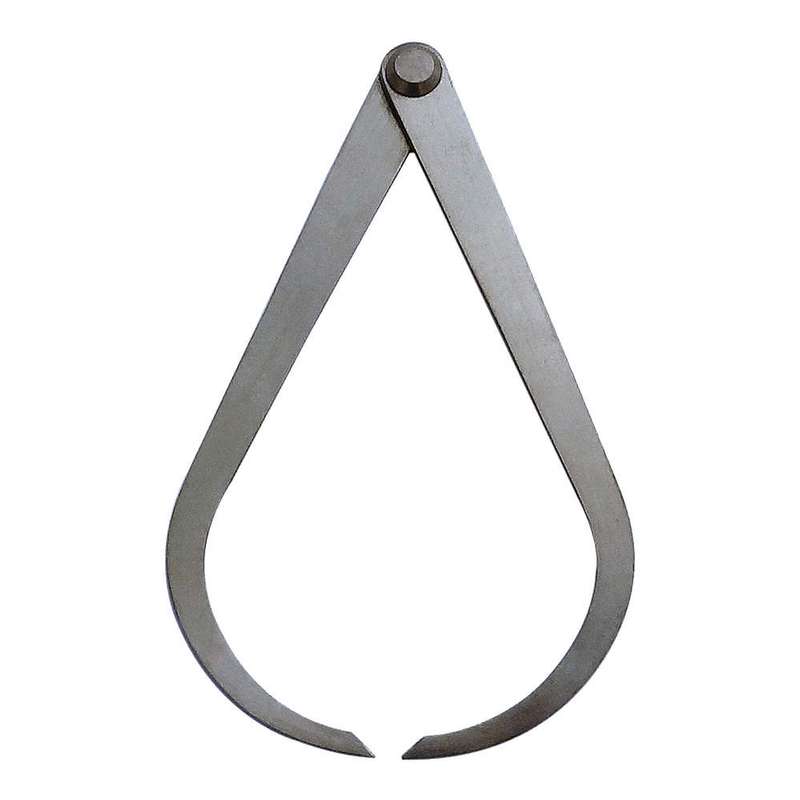
A caliper is the safest way to measure the diameter of your cylinder.
3. Contamination
A mica band heater is easily contaminant-prone if it is located at the tip of the cylinder and has a thermocouple hole. If you cannot locate the thermocouple in the gap, i.e. at the band closure; we recommend mineral band heaters that are completely sealed for this part of the cylinder.
Otherwise, just make sure the cylinder is clean and free of contaminants (ex: plastic, rubber, oil), because if just a layer, no matter how thin, ends up getting in the way of the cylinder being heated, causing the mica band to overheat to reach its temperature.
The Ceramic band heater is also easily contaminant-prone. This is why it must be installed a little further on the cylinder. However, even if not properly tightened, it won’t burn since it uses radiant heat.
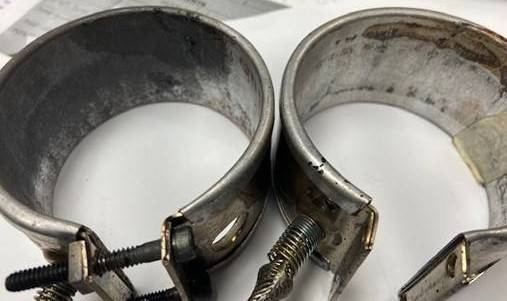
| Contaminated mica band heaters. |
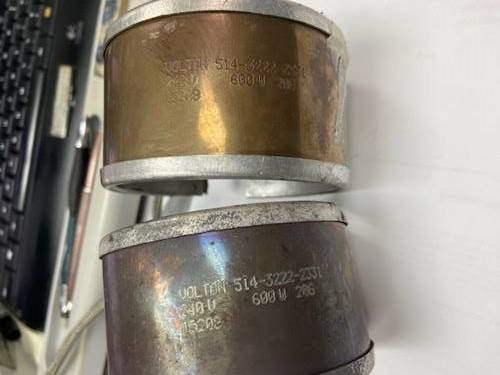
| The copper colored band heater on the right is a contaminated mica band that has overheated. |
| Below it, an uncontaminated mica band having heated normally. |
4. Excessive density (wattage)
Always respect maximum wattage recommended by the supplier if you want to prolong service life of your elements and avoid production shut-down. BEWARE, some manufacturers do not inform their client when a requested wattage is too high for the band surface. Generally, Volton recommends 35 watts/sq.in. max for mica and ceramic bands. However, with the correct design, the ceramic band heater is able to reach a higher temperature than mica.
5. Poor internal design
When a company calls on us to increase their elements service life, we need to open up another manufacturer’s band heater. Sometimes, we’re surprised.
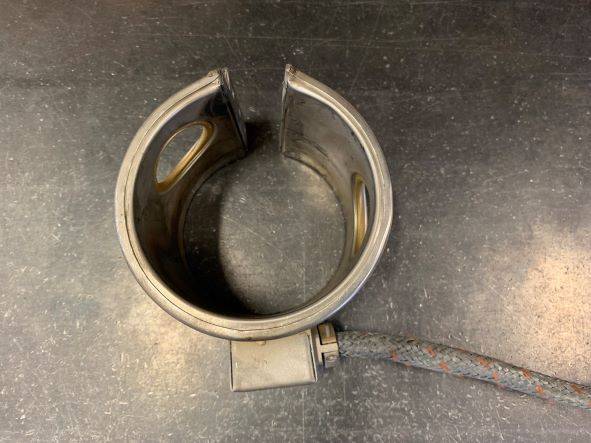
| Here is a heater from another manufacturer that |
| didn't last long according to the client. |
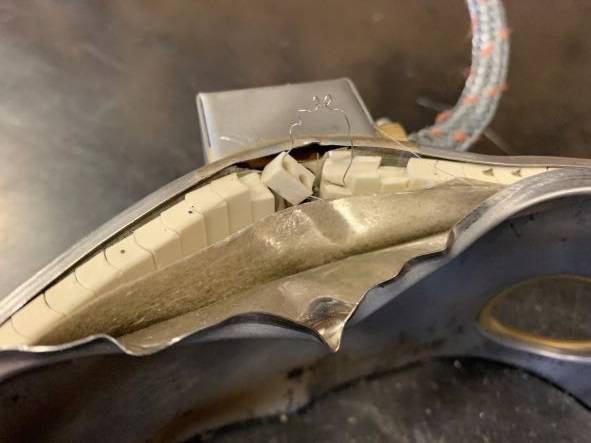
| When opening the heater we discovered a bad design. Ceramics are not designed to be |
| inserted between two metal sheets. Also, the resistive wire was too small for the power. |
If your band heaters do not last, put them aside so we can examine them. That’s the first step!
 Skip site navigation
Skip site navigation




















